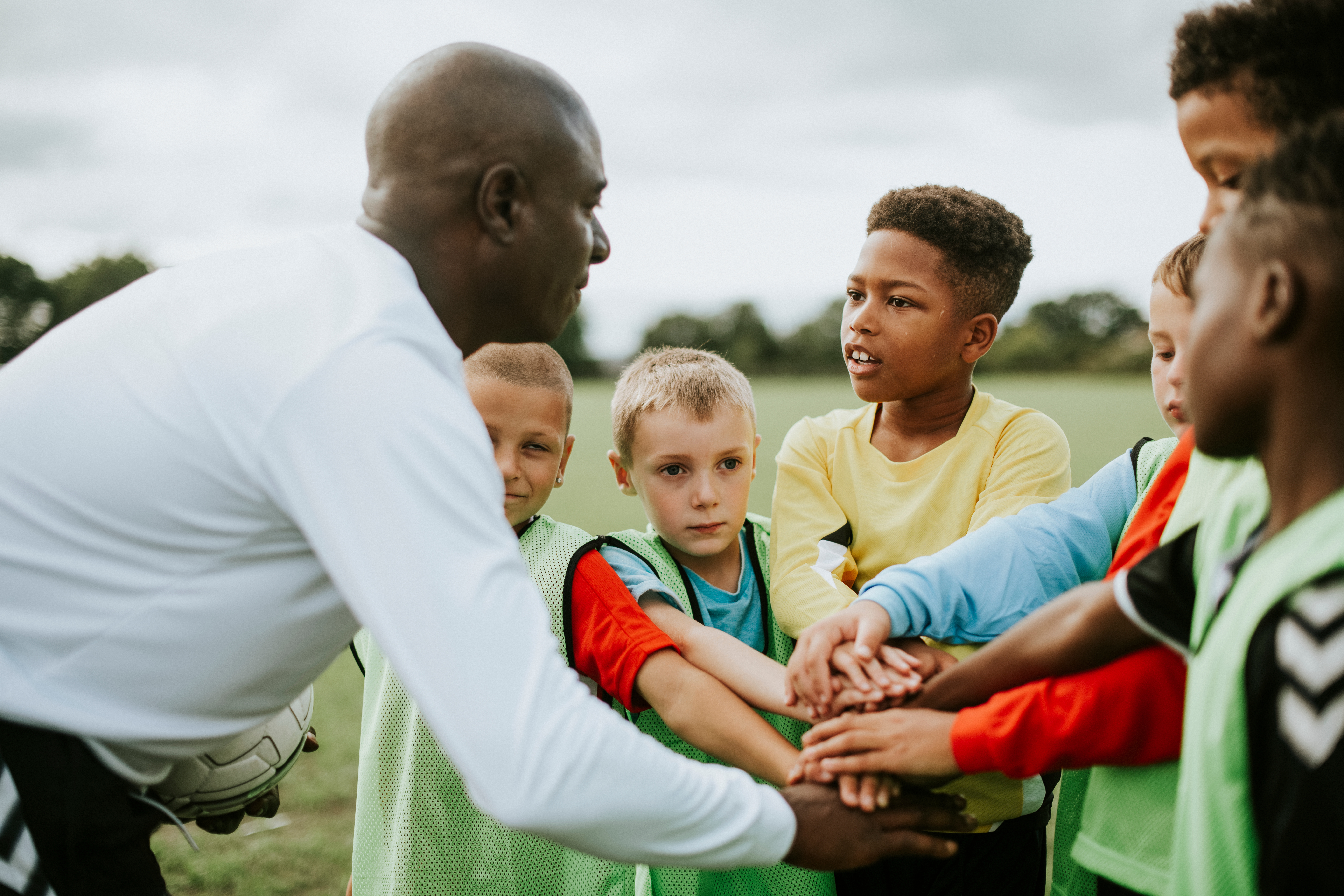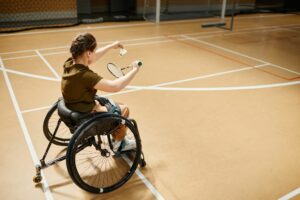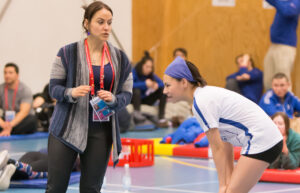
Introduction
Sport for Development and Peace (SDP) refers to the organization and mobilization of sport to meet non-sport goals of international development, such as health promotion, gender empowerment, education, and peace building and conflict resolution. The overall field or sector of SDP has grown significantly in the past 50 years, shaped in particular by the investment and involvement of global stakeholders like the United Nations, the International Olympic Committee, and various national governments. Canada’s involvement in the field of SDP in the past 50 years has evolved similarly, albeit through various iterations depending on the time and context.
Origins and context – 1980s and 90s
While the last 50 years are significant, SDP has a history that begins well before the late 20th century. As Bruce Kidd, former Olympian, academic and author notes, “SDP is a renewed expression of the ambition of ‘sport for good’ that dates back to the 19th century” and differs from traditional sports development by positioning sport in the service of the social good rather than increasing participation or producing champion athletes (Kidd, 2013, p.72).
 Some of the impetus for renewing SDP in Canada in the past 50 years came from the various crises that confronted Canadian sport, particularly in the 1980s. First amongst these was the doping scandal that led to the Dubin Inquiry. The inquiry was a series of nationally televised public hearings held to examine the circumstances leading to Canadian sprinter Ben Johnson’s ban from the 1988 Olympics for testing positive for steroid use. When he published his report in 1990, Justice Dubin called for a renewed commitment to sport in the service of Canadian culture and the health of Canadians, and also called for reinvigorating notions of sport for good in Canada.
Some of the impetus for renewing SDP in Canada in the past 50 years came from the various crises that confronted Canadian sport, particularly in the 1980s. First amongst these was the doping scandal that led to the Dubin Inquiry. The inquiry was a series of nationally televised public hearings held to examine the circumstances leading to Canadian sprinter Ben Johnson’s ban from the 1988 Olympics for testing positive for steroid use. When he published his report in 1990, Justice Dubin called for a renewed commitment to sport in the service of Canadian culture and the health of Canadians, and also called for reinvigorating notions of sport for good in Canada.
Similar pressures for sport for development emanated from the successful campaign to isolate white South Africa in international sport, as a way to pressure the repressive South African government to abolish the entire system of apartheid. In 1990, at a major conference in Stockholm, the South African anti-apartheid leader Sam Ramsamy called for First-World countries to assist with sports development in post-apartheid South Africa as ‘reparations’ from the years of investment in white South Africa. The Zimbabwean Olympic leader Tomas Sithole asked for the same support for the ‘front-line’ states, which had also been damaged by apartheid. The following year, Commonwealth prime ministers endorsed the call at their meeting in Harare, in what became known as the Harare Declaration. Canada’s delegation to Harare included Minster of Foreign Affairs (and former Prime Minister) Joe Clark, as well as Foreign Affairs Sports Officer Anne Hillmer, and saw the establishment of the Commonwealth Committee on Cooperation through Sport, to be chaired by Canadian politician and jurist Roy McMurtry.
Around this same time, Canadian athletes began to call for athlete-led sport for development as part of a broad program of reforms. At the 1994 Commonwealth Games in Victoria, the Canadian Athletes Association (later AthletesCAN) unveiled the Victoria Declaration, calling on the Commonwealth Heads of Government (CHG) to empower and enable athletes’ contributions to “education, social development and intercultural understanding.” AthletesCAN also called for an ‘athlete centered system,’ characterized by athlete rights, stronger athlete representation in sport governance and policies to prevent sexual and other forms of abuse in sport.
After lobbying the Commonwealth to embrace sport in the service of the social good, the Canadian government began to explore further the possibility of funding international SDP projects. Consultant Judy Kent was tasked with developing a framework for Canada’s involvement in SDP and her scan of the international field formed the basis for early Canadian policy in SDP. In 1992, McMurtry and Hillmer arranged a meeting of Canadian sport leaders to develop a policy model. The question of where within the Canadian government such a program would live proved to be less than straight forward; the Canadian International Development Agency (CIDA) was supportive but had no expertise in sport, and Sport Canada had difficulty securing funds for programs outside its sport development mandate.
Eventually, the Commonwealth Games Association of Canada (in turn Commonwealth Games Canada or CGC, and now Commonwealth Sport Canada) accepted the task of implementing an initiative called the Commonwealth Sport Development Program (CSDP), on the condition of federal funding. The initial goals of the CSDP were to support sport capacity and public sport systems in countries and communities where this was lacking, as well as to enhance sport participation for marginalized groups, particularly youth at risk, girls and young women and persons with a disability. The original CSDP had regional offices in Barbados, Zimbabwe and Sri Lanka and networked with other donor countries such as Norway, Denmark, Sweden and the UK. The CSDP paved the way for the establishment of Commonwealth Games Canada International Development through Sport (CGC IDS). It included an internship program, the Canadian Sport Leadership Corps, and arranged Canadian university physical education graduates to serve as volunteer interns in Asia, Africa and the Caribbean. In Africa, a major focus was the battle against the devastation of HIV and AIDS. In partnership with African organizations such as Kicking AIDS Out and the Mathare Youth Sports Association (MYSA), CGC IDS reshaped the delivery of sport and physical activity to conduct preventive education and anti-stigmatization.
CGC continued to operate international programs, with support from CIDA and Sport Canada, into the mid-2000s and Sport Canada dedicated an entire unit to international SDP. This unit eventually participated in the United Nations Sport for Development and Peace – International Working Group (SDP-IWG), a landmark stakeholder collective that advanced international SDP policy and advocacy.
While significant SDP activity was taking place in Canada via government involvement and public policy, notable non-governmental stakeholders were also emerging. Building on the groundwork and momentum laid out by the Canadian Athletes Association and the Victoria Declaration, Olympic Athletes Together Honorably (OATH) was a group of Olympians calling for reform in response to the 1998 bribery scandal of International Olympic Committee (IOC) delegates by the organizers of the Salt Lake City Olympic bid. OATH was led by Canadian athletes, including swimmer Mark Tewksbury, rower Heather Clarke and speed walker Ann Peel, the latter of whom had been instrumental in organizing the Victoria Declaration. OATH launched officially in Lausanne, home of the IOC, and sought to hold the organization to ethical account.
A key actor to emerge from OATH was Johann Olav Koss, the champion Norwegian speed skater, who was inspired by OATH to translate athletes’ voices on social issues into practical actions on the ground. Koss had already been involved with international Non-Government Organizations (NGOs) like Save the Children. He had donated his financial bonuses for winning Olympic medals at the 1994 Winter Olympic Games in Lillehammer to the relief efforts in war-torn regions, particularly Sarajevo, home of the 1984 Winter Olympics, and Afghanistan.
 Koss’ efforts led to the creation of a new humanitarian initiative, Olympic Aid, which was supported by the Lillehammer Olympic Organizing Committee. Olympic Aid initially supported fundraising for the Red Cross and similar efforts, then eventually moved to building schools and supporting educational programs around the world. Projects such as these were instrumental in re-affirming sport in the service of the social good.
Koss’ efforts led to the creation of a new humanitarian initiative, Olympic Aid, which was supported by the Lillehammer Olympic Organizing Committee. Olympic Aid initially supported fundraising for the Red Cross and similar efforts, then eventually moved to building schools and supporting educational programs around the world. Projects such as these were instrumental in re-affirming sport in the service of the social good.
In the late 1990s, Koss relocated Olympic Aid to Canada, and hired Peel as the organization’s first Executive Director in 2000. Under Peel, Olympic Aid began to pursue Koss’ vision, expanding Olympic Aid’s activity beyond fundraising and into programming. Specifically, Olympic Aid developed sport-based interventions aimed at supporting vulnerable and under-served youth around the world. The organization’s initial foray into programming was through a partnership with the UN’s High Commission for Refugees (UNHCR), implemented in countries like Angola and Cote d’Ivoire. However, as the organization grew, the IOC’s increasingly insistence upon tight control sparked tensions. In 2000, by mutual agreement, the organization left the IOC and changed its name to Right to Play. Today Right to Play is still headquartered in Canada, and continues to organize and implement SDP programs around the world, as well as in Canada itself.
2000s and 2010s
By the 2000s, Canadian involvement – and public investment – in SDP, had shifted. The reduction in Sport Canada’s funding during the 1990s had left little support for SDP efforts into new countries. And when some funding was restored after 2000, it was primarily to support domestic sport. The promise and momentum created by the CGC IDS proved hard to maintain. Even then-Canadian Heritage Minister Sheila Copps’ efforts to grow the number of interns within the Canadian Sport Leadership Corps was met with resistance by Sport Canada. Some of this resistance was based on skepticism of sport for the social good, particularly given the elitist image ascribed to some athletes and the criticism of over-spending on major sports events. The efforts of CGC IDS, AthletesCAN and Right to Play to challenge such narratives were unsuccessful. The struggle for SDP in Canada was further exacerbated by cuts to official development assistance spending. During this period, many G7 donor countries cut their support below the internationally recognized target of 0.7% of GDP.
Some Canadian SDP advocates responded by once again looking towards the Commonwealth, specifically the Commonwealth Committee on Coordination through Sport, and its successor the Commonwealth Advisory Board on Sport (CABOS). In 2010, backed by Commonwealth sport ministers, the Commonwealth Secretariat prepared policy documents to ‘mainstream’ SDP across development efforts and work with member governments to support sport in the service of the Millennium Development Goals (MDGs), the UN’s international development agenda between 2000-2015.
These efforts, along with a significant number of interagency reports, lobbying and working groups within the UN system, resulted in a somewhat mixed bag of SDP activities and policies within Canada by the end of 2010. And in instances where SDP remained in policy, it often lacked support for implementation, with the effect of limiting overall progress. On the one hand, sport for development was included as one of the 5 contexts of the 2012 Canadian Sport Policy. And in 2015, when the UN released the Sustainable Development Goals (SDGs), the successor to the MDGs and the core of its 2030 Development Agenda, sport featured more prominently than ever. Article 37 of the SDGs makes specific reference to the “growing contribution of sport to the realization of development and peace in its promotion of tolerance and respect and the contributions it makes to the empowerment of women and of young people, individuals and communities as well as to health, education and social inclusion objectives” (United Nations, 2015).
And yet arguably the momentum around SDP in Canada from the 1990s onward also slowed significantly at the end of the 2010s. The Canadian Sport Leaderships Corps was replaced by Sport Leaders Abroad, which put experienced leaders rather than recent university graduates on the ground. That same year, the International Policy and Programs Directorate was moved from Canadian Heritage to Sport Canada, even though international SDP was not a Sport Canada priority, and Sport for Development was included as one of the 5 goals in the Canadian Sport Policy with a stronger focus on domestic objectives. While Sport Canada’s mandate and funding continue to prioritize sport systems and athlete development, Sport Canada continues to support domestic sport for development projects through, for example, bilateral agreements with provinces and territories.
Currently
 As of this writing, SDP continues in Canada. Right to Play, for example, currently partners with more than 70 Indigenous communities to support access to sport and play programs that are “community-led, (and) culturally relevant” to First Nations, Inuit and Metis, and designed to foster empowerment and life skills (Right to Play, 2023). Such efforts have received significant academic and researcher attention, some of it positive, and others questioning whether such programs unwittingly reinforce structures of settler colonialism (Arellano and Downey, 2019). Some have also called critical attention to the ways that extractive corporations, operating in the Canadian north, have used the notion of SDP as a way to justify unethical and environmentally destructive policies (Millington et al, 2019).
As of this writing, SDP continues in Canada. Right to Play, for example, currently partners with more than 70 Indigenous communities to support access to sport and play programs that are “community-led, (and) culturally relevant” to First Nations, Inuit and Metis, and designed to foster empowerment and life skills (Right to Play, 2023). Such efforts have received significant academic and researcher attention, some of it positive, and others questioning whether such programs unwittingly reinforce structures of settler colonialism (Arellano and Downey, 2019). Some have also called critical attention to the ways that extractive corporations, operating in the Canadian north, have used the notion of SDP as a way to justify unethical and environmentally destructive policies (Millington et al, 2019).
At the same time, Canadian sport today is again in near crisis, reeling from widespread allegations of sexual assault and other forms of maltreatment, unaccountable governance, and the misappropriation of public funds, and exposed on almost a daily basis by investigative journalists and athletes in a long list of sports. In addition, everyday participation has fallen or at best flatlined in the face of widespread cutbacks to public opportunities, widening inequality, and ‘pay for play’ in private programs. The decline in participation is a heightened worry in the post-COVID world when the resilience offered by healthy physical activity is so vital to community health. In this context, the focus on ‘own the podium’, and the pursuit of medals in international competition as the overarching goal of Canadian sport policy, is a matter of debate for many in the Canadian sports community as well as the general public.
READ MORE: Taking a person-first approach to high performance sport in Canada
In a March 2023 SIRCuit article, Chief Executive Officer of OTP, Anne Merklinger, acknowledged that “perception is reality.” But Merklinger also said it’s not correct and a “flawed” idea to think that if an athlete wins a medal, the sport gets funding. Merklinger said OTP makes funding recommendations not looking at past results but rather looking into the future over an 8-year time horizon that takes into consideration many factors and not simply winning.
“As an organization, I think we need to do a better job in increasing the awareness and understanding of what we do,” she conceded. Merklinger said the stories that have come out in the past year have caused everyone in the sports system to do some soul searching to examine how things can be improved. For more than 3 years, OTP has been focused on improving the culture in high performance sport. Merklinger said the organization has made “culture” a part of its mandate, to help National Sport Organizations (NSOs) achieve excellence through a clear set of values, including the provision of a safe and inclusive environment in the high-performance program.
What remains to be seen is if this will become a moment of reform, akin to the Dubin period in the early 1990s, when an emphasis upon renewing core principles of sport enabled innovative sport for development programming to emerge as an essential component of a values-based, inclusive approach. Whether, or to what extent, the soon to be released next Canadian Sport Policy includes reference to SDP, either domestically or internationally, will mark another pivotal moment for sport for development and peace in Canada.
About the Author(s)
Simon C. Darnell is Associate Professor and Director of the Centre for Sport Policy Studies in the Faculty of Kinesiology and Physical Education at the University of Toronto, Canada. He researches the relationships between sport, international development and peacebuilding; environmental sustainability in sport-for-development, and social activism in sport culture.
Russell Field is an Associate Professor in the Faculty of Kinesiology and Recreation Management at the University of Manitoba. His research explores sport and social justice. He is the author of A Night at the Gardens: Class, Gender, and Respectability in 1930s Toronto and co-author of The History and Politics of Sport-for-Development: Activists, Ideologues and Reformers.
Bruce Kidd is the Ombudsperson and professor emeritus of sport and public policy at the University of Toronto. He has been a lifelong advocate of human rights and sports for development. His memoir, A Runner’s Journey, was published by University of Toronto Press in 2021.
References
Arellano, A., & Downey, A. (2019). Sport-for-development and the failure of aboriginal subjecthood: Re-imagining lacrosse as resurgence in indigenous communities. Settler Colonial Studies, 9(4), 457-478.
Kidd, B. (2013) “Canada and Sport for Development and Peace.” In Thibault, L. and Harvey, J. (eds) Sport policy in Canada. University of Ottawa Press.
Millington, R., Giles, A. R., Hayhurst, L. M., van Luijk, N., & McSweeney, M. (2019). ‘Calling out’ corporate redwashing: the extractives industry, corporate social responsibility and sport for development in indigenous communities in Canada. Sport in Society, 22(12), 2122-2140
Right to Play (2023). Indigenous Programs. Retrieved from: https://www.righttoplay.ca/en-ca/national-offices/national-office-canada/get-involved/indigenous-programs/ November 3, 2023.
United Nations (2015). Transforming our World: The 2030 Agenda for Sustainable Development. Retrieved from: https://sdgs.un.org/2030agenda November 3, 2023.
The information presented in SIRC blogs and SIRCuit articles is accurate and reliable as of the date of publication. Developments that occur after the date of publication may impact the current accuracy of the information presented in a previously published blog or article.
